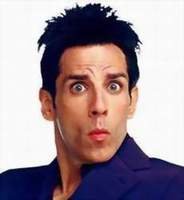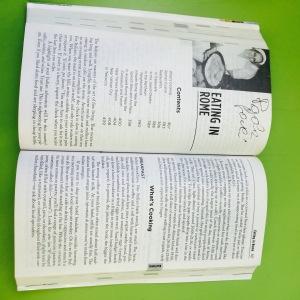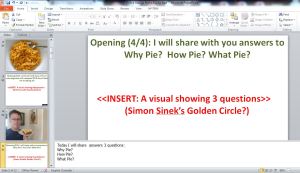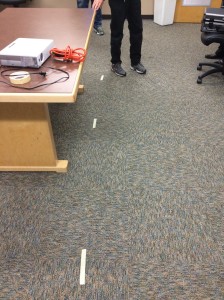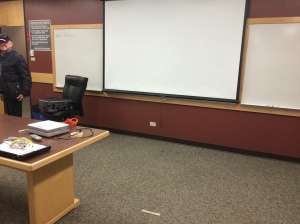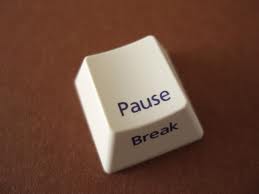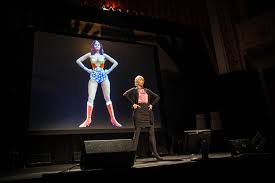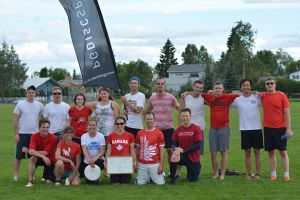This is an outline for a speech I am delivering on April 1, 2015. Kindly read, enjoy and tell me what you think. Your feedback will be incredibly valuable.
I uploaded the slide deck to http://www.slideshare.net/gregjonuk/3-transformative-powerful-places-to-plunder-in-paris-march-15-45870369 to give you an idea of the visuals.
Introduction:
Greg Jonuk is a lucky man.
Despite his meager public service salary & personal frugalness, he has used wit & gall to scrap together 3 trips to Europe, for which he is most fortunate:
- In 2009 he traveled with his son Gabriel, then 10
- In 2013 he traveled with his daughter Alexa, then 12
- And, in 2014 he traveled with his wife Terri, then 29 & holding.
Today, Greg will share with incites from these experiences, which included 2 separate expeditions & 8 cumulative days in Paris.
This material is also a muse to introduce other concepts he is passionate about as a Learning Organization Practitioner and Registered Forest Technologist with the BC Public Service since 2004.
His objectives are 3-fold:
- To entertain
- To inform, and
- To inspire you to think differently about the concept of transformation learning
Please help me welcome Greg, for his ETC. talk: 3 Transformative & Powerful Places to Plunder in Paris
Hook:
Imagine yourself stepping off a train at Gare de Nord & immerging onto the streets of Paris. Where will you go?
- Here? (show slide # 4 of Eiffel tower)
- Here? (show slide # 5 of Arc De Triomphe)
- Maybe here? (show slide # 6 of Notre Dame)
And if you did, I would flash you one of these (show #7 of “thumbs up” gesture) because those are some world-class iconic sites.
However, what I’ve learned from my travels is that when you get yourself off the beaten bath, just a wee bit; you get to what I call the next level of a place. And, that is a real place of transformation.
Salutation: Madam chairperson, fellow public servants.
Opening:
Today I will share with you three of my top next level, off the beaten bath destinations in Paris, the city of lights. They are:
- #1 the Musee d’ Orsay, which some call the train station museum.
- #2 the Conciergerie, one of the most historically important places in Paris, and
- #3 The market street Rue Cler
Aterwards, I will share with you what this means to us in the BC Public Service.
Paris main point #1 (Musee d’ Orsay):
I’ll start with a museum. When most people think of Paris, they think of this place (show slide #13 of the Louvre), the Louvre. That’s natural because the Louvre is huge, 15 acres and over 35,000 pieces of art in it’s collection. Including: (show slides #14 to #19 of various art at a rapid pace). Leonardo, Michelangelo, Caravaggio.
It’s where Mona sports her smile, liberty leaders her people, and Napoleon crowns his emperor (himself) 24/7.
It’s also home to my favourite painting in the whole wide world Gericault’s Raft of the Medusa. Exhibit A: Here is a shot of me and “Rafty” right here : (show slide #20).
However despite all of that goodness, the Louvre is not my most cherished museum in Paris. That honor would go across the river Seine t0 the Musee d’Orsay (show slides #21 to #29 of Orsay exterior and interior).
The first thing I appreciate about the Orsay is the beautiful Beaux-Arts structure. Some say that the building itself is the Orsay’s first great piece of art. It was built in the year 1900 as a train station; however, after 30 years in use, it became obsolete. After being abandoned for nearly 50 years, it was saved at the last moment from the wrecking ball by being refurbished into an art museum. I love both redemption and recycled and repurposed objects so I love the Orsay.
What a glorious space. The former train platform area is expansive. Look how light floods the interior though huge pane windows. A plethora of huge clocks are interesting to look at and though.
Then there is the art. Impressionist and post-impressionist from 1848 to 1915. The impressionists saw the lighting on the wall and realized that photography was changing their game. In response, they came up with innovative ways to display movement and emotion in their work and transformed art.
Come to the Orsay to see (show slides #29 to #38 of Orsay art in rapid advance) : Manet, Monet, Courbet, Cezanne, Millet, Dega, Renoir, Rodin, and Van Gough.Go to the tried and true Louve, you will get lost in her stacks. Then, come to the Avante-Garde Orsay, and fall in love (show slides #39 to #40 of Louvre and Orsay exteriors).
Paris main point #2(Conciergerie):
The second place I will share with you may be one of the most historically important buildings in France. The Conciergerie was built in the 13 century as a royal palace. It then became a fortress, then a prison and exists today as an exhibit space and national historic monument (show slides #41 to #42 title slide and Conciergerie exterior).
Marvel at how early masons morphed marble and stone into this wonderfully vaulted and ribbed ceiling in the Hall of Soldiers, one of the last surviving medial halls in Europe (show slide #43 of Hall of Soldiers).
Then, have your breath taken from you as you step inside the prison cell of Marie Antoinette, perhaps history’s most misunderstood antagonist. This is where she spent her last days, her last moments before her untimely rendezvous with the guillotine at the beginning of the French Revolution (show slides #44 to #45 of Hall of Marie Antoinette’s cell, portrait, and guillotine).
The Conciergerie is one of the post poignant historical places on the planet and certainly is deserving of your time and attention (show slide #46 of Conciergerie exterior).
Paris main point #3 (Rue Cler):
The last place on our tour is not an attraction. You will spend nothing to get on it but heaps to get off. That’s because it is the market street Rue Cler. The place is invested with places that will devour your money. Luckily, as a window shopper I am immune to the boutiques. However, I will be fearful when I return with my wonderful wife Terri, her alternative form of commerce, something she calls “real shopping,” might make us easy prey (show slides #47 to #49 title slide, pan view of street, and boutique exterior).
However, I do like to shop, for things that I can digest. That is why I suggest that when you visit Rue Cler, you pop into the boulanger for some fine French bread, then to a patissier for a strawberry tart. If lucky, you can find them both in the same building like an upscale Taco bell and KFC (show slide #50 of boulanger / patissier exterior).
Then, cross over to the fromagerie for some colorful and fragrant cheese (show slide #51 of fromagerie exterior).
If you have a fetish for viewing raw fish and seafood on beds of ice, check out the poissonnerie (show slide #52 of poissonnerie exterior).
And, carnivores will be thrilled at a charcuterie, with its cured meats and sausage (show slide #53 of charcuterie exterior).
Then, after all that shopping, you’re bound to be hungry, so park yourself down at the local neighborhood café, and watch the world walk past you. This delight I know from experience. (show slides #54 to #55 of café exterior and interior).
The point of a visit to Rue Cler is simple; spend a morning, an afternoon or an evening, pretending that you are Parisian for a short period of time.
Paris Summary:
Folks, I just shared with you my top 3 next level, off the beaten path destinations in Paris:
#1 the impressionist Musee dèOrsay. #2 the historically steeped Conciergerie, and #3 the market street Rue Cler. Go to places like this and expect transformation: from tourist to traveler, traveler to temporary resident(show slides #56 to #62).
Segue to BCPS tie:
I know what you are thinking, this message is entertaining & all but what does it have to do with work in the BCPS? Well I’m glad you asked that.
What I’ve talked about so far hinges the concept of transformation, specifically transformational learning & this is something I think each of us is seeking in some way:
- Some of us are looking to bite their teeth into a new project or career position
- Others may be seeking to develop some strengths while fortifying a weaknesses
- A few, no doubt, are itching to get back to their work units and put into practice recently learned skills or knowledge.
- And, I bet there is at least one person in this room who is looking forward to transforming into retirement.
The want to transform & learn is universal & ubiquitous. I think we all want to be better @ dusk, in comparison to what we were@ dawn. Sometimes we don’t know how to do that, or, don’t currently have the needed capacity for it, but the want to transform is there in most of us
And, I think there is also a collective need for transformation. For example if we want to boost the Engagement, technology, & Culture quotient of the BCPS, partly why we are at this session today, then we need to individually transform, to fuel such a collective goal.
As Ghandi said: be the change you want to see in the world
But of course, anything Ghandi has said is easier said than done so to help my transformational learning experiences, I’ve mocked up a 4-step life-hack to guide me when I’ve lost my way. I call it my 4 steps to transformation (show slide #63).
BCPS main point #1 (Shift):
The 1st step in personal transformation involves a shift in thinking.
Marcel Proust said “the real voyage of discovery consists not in seeking new landscapes, but in having new eyes “In other words, if we shift our thinking, we initiate a process that brings about further change & learning.
In my case, I’ve embraced the idea that a large part of transformation for me is putting myself in uncomfortable sticky places
I do this though travel and by visiting off the track destinations, but at home, I do this by thinking that doing things that challenges me and scares me (like this ETC talk) will eventually result in the transformational learning I’m looking for (show slide #64).
BCPS main point #2 (Seek-out):
Next you have to seek-out those places, those fertile grounds where you are most likely to grow & transform.
When I first saw these ETC talks being delivered by my fellow BC Public Servants, I circled them as something I too do for my professional development (show slide #65).
BCPS main point #3 (Sign-up):
Next you have Sign-up & commit to immerse yourself in the places & opportunities you identify.
The invite to be here was delivered while I was on leave. It was buried in a sea of post-vacation email. I could have easily ignored or deleted it but I realized that as stressful as it would be to prepare a talk while I’m catching , you have to take advantage and sign-up for opportunities when they present themselves
Next you have Sign-up & commit to immerse yourself in the places & opportunities you identify.
The invite to be here was delivered while I was on leave. It was buried in a sea of post-vacation email. I could have easily ignored or deleted it but I realized that as stressful as it would be to prepare a talk while I’m catching , you have to take advantage and sign-up for opportunities when they present themselves (show slide #66).
BCPS main point #3 (Show-up):
Finally, you have to Show-up. It would have been a really easy day for me to call in sick or drive to my cozy comfortable cubical on the other side of town this morning.
Instead, I deliberately choose to be here, under these hot stage lights & in front of your watchful, intense gaze. Showing up can be hard and scary. But, it’s the last step and tonight, I have a date with an adult beverage or two (show slide #67).
BCPS main point #3 (Conclusion):
So that’s my 4 step life hack for transformation (show slide #68).
- Shift
- Seek-out
- Sign-up
- Show-up
But enough about me. (show slide #69). I’m more interested in what you feel, think, & may do as a result of listening to my soapboxing here today.
I hope you feel that there is merit in this idea that transformation happens when we put ourselves in the best possible place for it.
Then I hope you think of some areas where you can challenge yourself in this regard & follow that up by signing-up & showing-up for them
What are your next level, off the beaten path places in your public service practice? Where you can go to make yourself susceptible & fertile for the transformation you want, & we collectively need?
Comment below, tweet me @gsjonuk, or email me at thejonuks@shaw.ca

